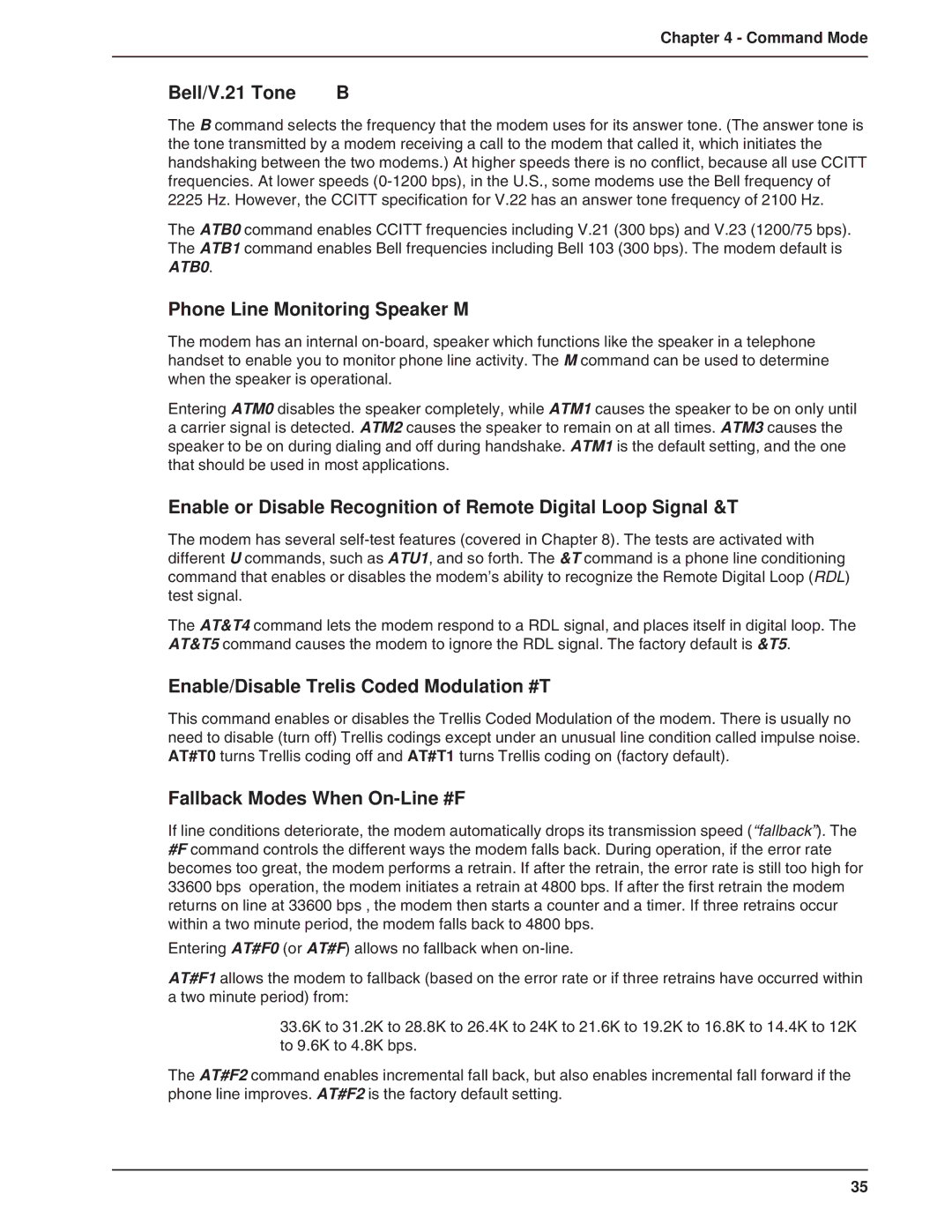
Chapter 4 - Command Mode
Bell/V.21 Tone | B |
The B command selects the frequency that the modem uses for its answer tone. (The answer tone is the tone transmitted by a modem receiving a call to the modem that called it, which initiates the handshaking between the two modems.) At higher speeds there is no conflict, because all use CCITT frequencies. At lower speeds
The ATB0 command enables CCITT frequencies including V.21 (300 bps) and V.23 (1200/75 bps). The ATB1 command enables Bell frequencies including Bell 103 (300 bps). The modem default is ATB0.
Phone Line Monitoring Speaker M
The modem has an internal
Entering ATM0 disables the speaker completely, while ATM1 causes the speaker to be on only until a carrier signal is detected. ATM2 causes the speaker to remain on at all times. ATM3 causes the speaker to be on during dialing and off during handshake. ATM1 is the default setting, and the one that should be used in most applications.
Enable or Disable Recognition of Remote Digital Loop Signal &T
The modem has several
The AT&T4 command lets the modem respond to a RDL signal, and places itself in digital loop. The AT&T5 command causes the modem to ignore the RDL signal. The factory default is &T5.
Enable/Disable Trelis Coded Modulation #T
This command enables or disables the Trellis Coded Modulation of the modem. There is usually no need to disable (turn off) Trellis codings except under an unusual line condition called impulse noise. AT#T0 turns Trellis coding off and AT#T1 turns Trellis coding on (factory default).
Fallback Modes When On-Line #F
If line conditions deteriorate, the modem automatically drops its transmission speed (“fallback”). The #F command controls the different ways the modem falls back. During operation, if the error rate becomes too great, the modem performs a retrain. If after the retrain, the error rate is still too high for 33600 bps operation, the modem initiates a retrain at 4800 bps. If after the first retrain the modem returns on line at 33600 bps , the modem then starts a counter and a timer. If three retrains occur within a two minute period, the modem falls back to 4800 bps.
Entering AT#F0 (or AT#F) allows no fallback when
AT#F1 allows the modem to fallback (based on the error rate or if three retrains have occurred within a two minute period) from:
33.6K to 31.2K to 28.8K to 26.4K to 24K to 21.6K to 19.2K to 16.8K to 14.4K to 12K to 9.6K to 4.8K bps.
The AT#F2 command enables incremental fall back, but also enables incremental fall forward if the phone line improves. AT#F2 is the factory default setting.
35
